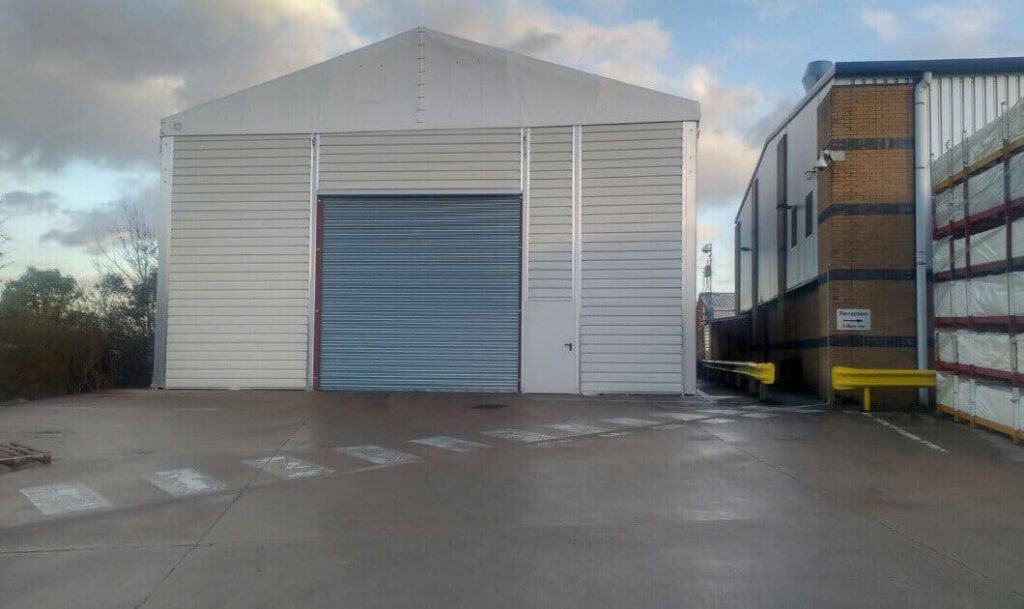In the bustling world of commerce, where demand can rise and fall like the tides, businesses often find themselves in a predicament. How do they handle the sudden influx of products during peak seasons without committing to expensive, permanent warehouse space? This is where the concept of temporary warehousing shines, offering a flexible and cost-effective solution to a problem as old as trade itself: seasonal overflow.
Understanding Seasonal Overflow
At its core, seasonal overflow refers to the periodic increase in inventory that businesses experience during certain times of the year. This could be due to holiday shopping seasons, harvest times in agricultural sectors, or even summer and winter sales in the fashion industry. During these peaks, companies are often left scrambling to find space for their additional stock.
The challenge of seasonal overflow is not just about space; it’s about managing resources efficiently. Companies need to balance the cost of storage with the risk of stockouts, where demand exceeds supply and potential sales are lost. This balancing act is crucial for maintaining profitability and customer satisfaction.
Industries at the Forefront
Certain industries are more prone to experiencing seasonal overflow due to the nature of their products and market demand cycles. Retail is a prime example, with businesses facing significant spikes in inventory around major holidays and sales events. The agricultural sector also deals with seasonal overflow, as harvest periods lead to a sudden increase in produce that needs to be stored and distributed.
The fashion industry, with its spring/summer and autumn/winter collections, must navigate the ebb and flow of seasonal trends. Similarly, the toy industry sees a significant upsurge in demand towards the end of the year, necessitating additional storage solutions. These industries, among others, must constantly adapt their logistics and storage strategies to stay competitive and meet consumer demands.
The Appeal of Temporary Warehousing
Temporary warehouses present a fast and cost-effective solution for managing seasonal overflow. Unlike permanent structures, these facilities can be set up quickly, often within weeks, providing immediate relief for storage woes. They offer the flexibility to scale up or down according to seasonal needs, ensuring businesses only pay for the space they require when they require it.
Moreover, temporary warehouses can be located closer to key distribution points, reducing transportation times and costs. This improves efficiency and enhances customer satisfaction by ensuring products are available when needed. The adaptability of temporary warehousing makes it an ideal choice for businesses looking to navigate the peaks and troughs of seasonal demand without overcommitting resources.
Financial and Operational Advantages
One of the key benefits of opting for temporary warehousing is the significant cost savings it offers. Building or leasing permanent warehouse space is a substantial investment that may not make financial sense for companies dealing with seasonal inventory fluctuations. Temporary solutions eliminate the need for long-term commitments, reducing overhead costs and improving cash flow.
In addition to financial flexibility, temporary warehousing also provides operational agility. Businesses can react more swiftly to market changes, expanding or contracting their storage capacity as needed. This agility is crucial in today’s fast-paced market, where consumer preferences and demand can shift rapidly.
Humanising Storage Solutions
At the heart of temporary warehousing is a simple, human-centric philosophy: adaptability. Just as people adjust to the seasons by changing their clothing or activities, businesses, too, must adapt to the seasonal flows of the market. Temporary warehousing offers a solution that is as practical as it is pragmatic, allowing businesses to respond to their environment in an efficient and economically sensible way.
The beauty of temporary warehousing lies in its simplicity and flexibility. It represents a solution that acknowledges the natural cycles of demand and supply, offering businesses a way to stay in harmony with these rhythms. Companies can maintain a lean operation by choosing temporary warehousing, focusing their resources on growth and innovation rather than being weighed down by fixed, underutilised assets.
Embracing Flexibility for Future Success
In conclusion, temporary buildings for seasonal overflow is not just a logistical strategy; it’s a mindset that values flexibility, efficiency, and adaptability. As businesses navigate the challenges of fluctuating demand, temporary warehousing stands out as a smart, scalable solution that aligns with the dynamic nature of the marketplace.
By understanding the ebb and flow of their industries and choosing storage solutions that can adapt to these changes, businesses can position themselves for success. Temporary warehousing allows companies to manage their inventory in a way that is not only cost-effective but also responsive to the needs of their customers. In a world where change is the only constant, such adaptability is not just desirable; it’s essential.

